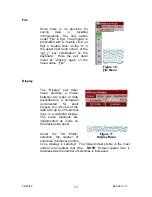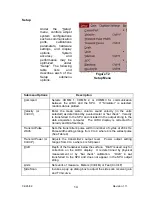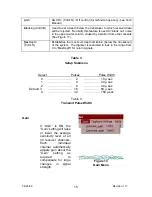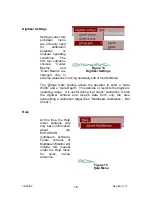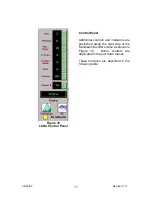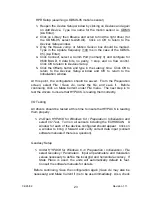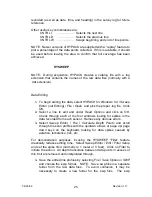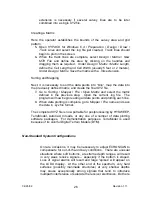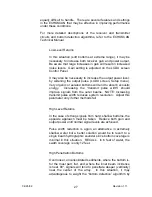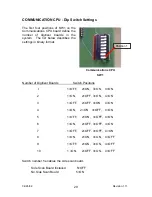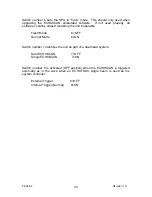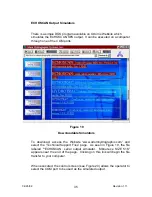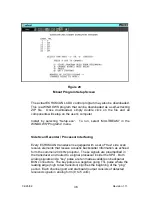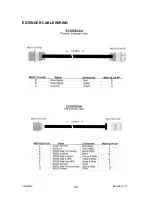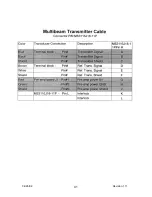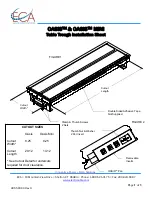
04/26/02
27
Revision 1.11
equally difficult to handle. There are several features and settings
in the ECHOSCAN that may be effective in improving performance
under these conditions.
For more detailed descriptions of the receiver and transmitter
circuits and bottom detection algorithms, refer to the ECHOSCAN
Technical Manual.
Low Level Returns
In this situation (soft bottoms at extreme range), it may be
necessary to increase both receiver gain and power output.
Be aware that large increases in gain will result in increased
noise levels. Gain setting is adjusted on the LCDU screen
Control Panel.
It may also be necessary to increase the output power level.
by widening the output pulse (LCDU screen, Setup menu).
Very organic or aerated bottoms will tend to absorb acoustic
energy. Increasing the “transmit pulse width” should
improve signals from the outer beams. NOTE: Increasing
transmit pulse width reduces system resolution. Adjust this
parameter only if other methods fail.
High Level Returns
In the case of strong signals from hard, shallow bottoms, the
opposite approach must be taken. Reduce both gain and
output power until normal signal levels are achieved.
Pulse width reduction is again an alternative in extremely
shallow water but a better solution would be to revert to a
single beam hydrographic sounder since bottom coverage is
minimal in this situation. RECALL: In 6 feet of water, the
swath coverage is only 12 feet.
High Penetration Bottoms
Over looser, unconsolidated sediments, where the bottom is,
for the most part, flat, and, where the inner beam incidence
is near 90°, signals will tend to penetrate deeper (vertically)
near the center of the array. In this situation, it may
advantageous to weight the “bottom detection” algorithm by
Summary of Contents for ECHOSCAN
Page 19: ...04 26 02 19 Revision 1 11 Blanking aeration Figure 17 Blanking Feature...
Page 38: ...04 26 02 38 Revision 1 11 EXTENDER CABLE WIRING...
Page 39: ...04 26 02 39 Revision 1 11 TRANSDUCER CABLES...
Page 40: ...04 26 02 40 Revision 1 11...
Page 41: ...04 26 02 41 Revision 1 11...
Page 42: ...04 26 02 42 Revision 1 11 JUNCTION BOX WIRING...
Page 43: ...04 26 02 43 Revision 1 11...
Page 44: ...04 26 02 44 Revision 1 11 HEADING SENSOR WIRING...

